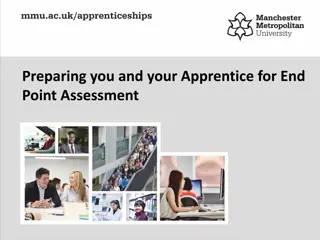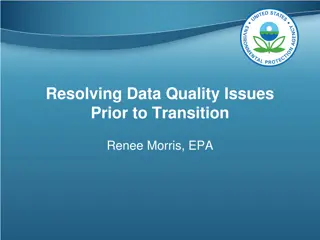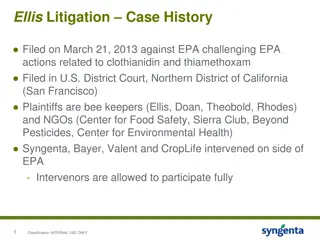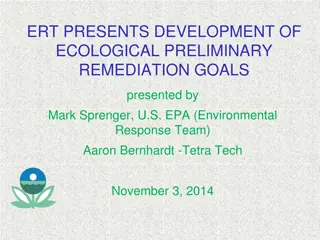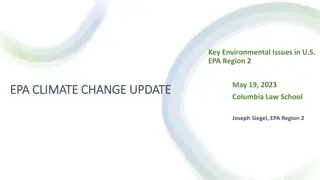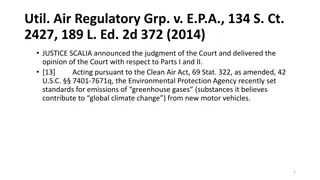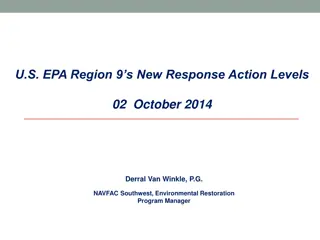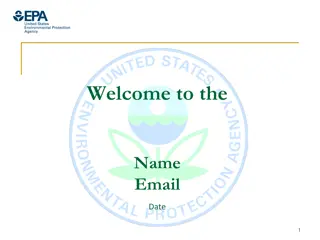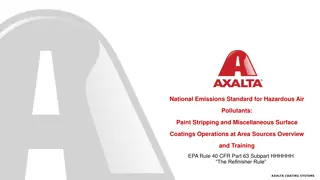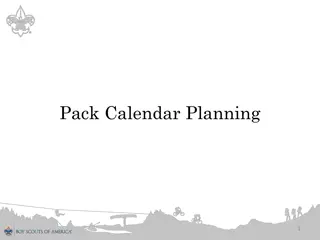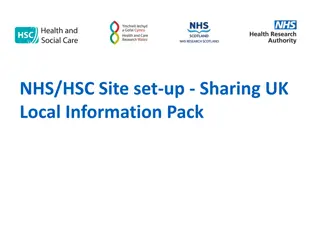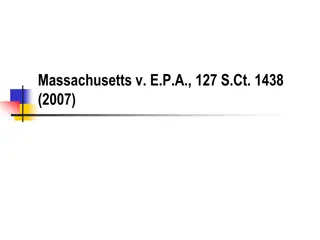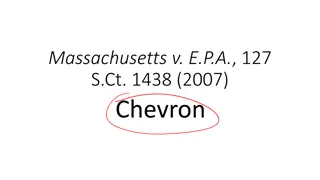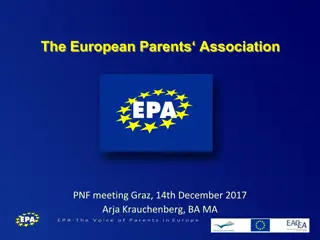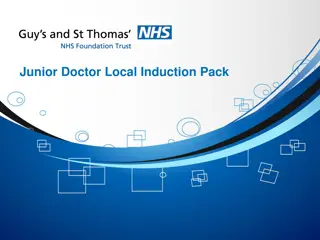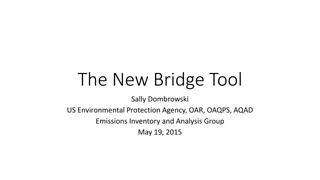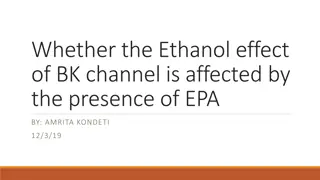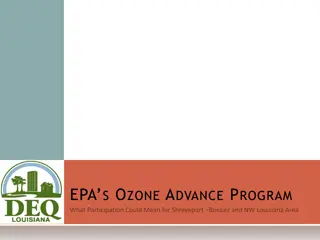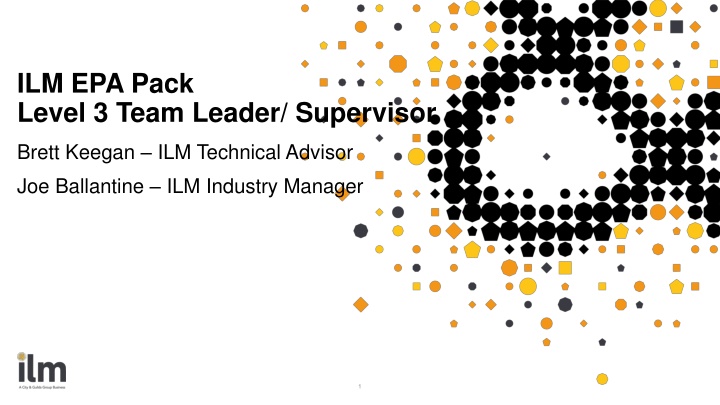
ILM EPA Pack Level 3 Team Leader/Supervisor Overview
Gain insights into the ILM EPA Pack Level 3 Team Leader/Supervisor, covering key sections, assessment methods, portfolio focus, and end-point assessment guidance. Explore details on the knowledge test and professional discussion for assessment preparation.
Download Presentation

Please find below an Image/Link to download the presentation.
The content on the website is provided AS IS for your information and personal use only. It may not be sold, licensed, or shared on other websites without obtaining consent from the author. If you encounter any issues during the download, it is possible that the publisher has removed the file from their server.
You are allowed to download the files provided on this website for personal or commercial use, subject to the condition that they are used lawfully. All files are the property of their respective owners.
The content on the website is provided AS IS for your information and personal use only. It may not be sold, licensed, or shared on other websites without obtaining consent from the author.
E N D
Presentation Transcript
ILM EPA Pack Level 3 Team Leader/ Supervisor Brett Keegan ILM Technical Advisor Joe Ballantine ILM Industry Manager 1
What well cover Level 3 Team Leader/Supervisor EPA Pack What s in the pack and where s the key info: Overview Explanation of key sections and what you ll find in them Focus on assessment methods Key info on each method, what additional guidance we provide and where to find it. Portfolio focus: Evidence types Portfolio checklist to support evidence selection and preparation Additional documents available (Exemplar materials and mapping documents) 2
End-point assessment pack Key Sections Section 1 Introduction Who is the document for, using and storing the ILM EPA pack. Section 2 The Standard and The Role knowledge, skills and behaviours (KSBs) of the apprenticeship standard, and an overview of the key responsibilities an apprentice should have and examples of the types of job role they should be in whilst undertaking the apprenticeship. Section 3 End-point Assessment Guidance Guidance on the EPA process, looking at each stage apprentices, providers and employers will pass through, including requirements for gateway, recognition of prior learning (RPL) and authentication of work. Section 4 Guidance for each assessment method these include assessment specifications for each method, as well as instructions for both providers and apprentices on what will be assessed, how long assessments will last and what is required to allow each assessment to take place. 4
Knowledge Test (pages 19-21) Assessment Specification Details of which areas of the apprenticeship standard are tested Details of the duration of the test, questions format, how many questions and marks there are and the pass mark for this assessment component. A breakdown of how the assessment is structured: How many AC are covered per section How many questions there are per section How many marks are available per section Instructions for centres How to book the assessment, assessment conditions and a link to our Instructions for Conducting Examinations. Sample test providedin Appendix 1 starting on page 44. At a glance: Weighting = 30% Total marks available = 30 Duration = maximum of 60 mins Structured questions linked to a series of scenarios. Online test using our E-volve platform 5
Professional Discussion (PD) relating to CPD Activity (pages 22-24) At a glance: Weighting = 20% Assessment Specification Details of what areas of the apprenticeship standard are assessed using this method. Details of what can be included as evidence of CPD/additional learning, which is what the Professional Discussion will be based upon. The duration of the professional discussion and what will occur during this time. Instructions for centres Steps the provider and/or employer must take to ensure the apprentice is prepared and can undertake the assessment. Details of the Assessment Criteria (AC) that will be covered by this assessment method. Appendix 4 starting on page 85 provides guidance on areas of discussion for the PD and is a valuable tool in supporting apprentices to structure their PD to cover all of the AC required. Based on any formal or informal learning undertaken during the apprenticeship, the knowledge gained and how it was applied. Key to remember that this is a Professional Discussion, not a Q&A, so learners should be prepared to lead the conversation. Carried out remotely using an online virtual meeting platform 6
Structured Competency-based Interview (CBI) (pages 25-27) Assessment Specification Details of which areas of the apprenticeship standard are tested The purpose and duration of the CBI, and what will occur during this. Appendix 3 starting on page 83provides examples of the types of question that could be asked for each section of the standard covered by this method. Appendix 3 also provides an overview of the approach the Independent End-point Assessor (IEPA) will take, and provides guidance including the importance of recognising and responding to the verbs used by the IEPA in their questions. At a glance: Weighting = 30% Apprentices can have their portfolio with them to support answering questions Example questions provided to allow for practice interviews to be carried out in preparation. Carried out remotely using an online virtual meeting platform 7
Professional Discussion and Competency Based Interview Guidance Make Sure candidates are familiar with remote meetings/interviews Ensure the candidate is clear about the purpose of these activities For the Professional Discussion the learner should be clear on the purpose of CPD activity. 8 8
Portfolio of Evidence (pages 28-34) Assessment Specification Details of which areas of the apprenticeship standard are tested A list of evidence types that can form part of the portfolio Key requirements when submitting the portfolio, including: At a glance: Weighting = 20% Submitted via our online EPA Portal A Declaration of Authenticity An Evidence Matrix must be included 9
Portfolio of Evidence (pages 28-34) Guidance for providers including: Evidence presented must have been generated over the period of the apprenticeship only Additional detail on evidence types and clarification on the level of detail that should be included in evidence Key questions/criteria to support the selection of evidence, and key steps in confirming and preparing evidence for submission 10
Portfolio Checklist (page 30) Additional guidance for the portfolio of evidence: A Portfolio Checklist, which includes 13 questions to ensure all relevant information is included 11
Portfolio of evidence Evidence types Work products Reports Presentations Performance reviews between employer and apprentice Observations (recorded by the training provider) Ongoing professional discussions between apprentice and training provider relating to projects and assignments (recorded by the training provider) Feedback from line manager, direct reports and peers including 180/360 degree feedback approaches Presentations Reports Work products 12 12
Appendix 2 Portfolio Assessment Guidance (pages 59-81) This section is focussed on providing additional detail around the evidence expectations for the Portfolio. This section contains a new table with the following columns: Within this table the Skills column identifies a specific area of the standard, e.g. Leading People. The What is required section identifies specific Assessment Criteria Then the Guidance on evidence types and the quality of evidence section identifies how the AC identified are measured and examples of what evidence could be for each of these AC. 13
Portfolio of Evidence Mapping portfolio from 8410 to EPA This includes: how criteria from 8410 map to EPA criteria. examples of what this evidence could be and how it should be checked and prepared for submission. 14
General guidance for the portfolio The Portfolio needs to holistically show: Acquisition and demonstration of skills Demonstration of behaviours Evidence collected towards the end of their apprenticeship program, as candidates become independent in their work and complete larger activities, is likely to provide the most holistic evidence Contextualisation by learners is key Apprentice s role in producing the work must be clear 15 15
Exemplar Materials New exemplar materials for Level 3 Team Leader/ Supervisor End-point assessment Exemplar materials include: Skills scan Professional discussion transcript Professional discussion example recording form Competency-based interview transcript Competency-based example recording form 16
Questions answers 18
Presentation Heading - Subheading 13 April 2025 Key documents and contacts Key Documents EPA Pack, Recording Forms and Mapping document Walled Garden Booking Guide EPA Portal Guide 8 Steps EPA Journey Key Contacts EPA Support Team - epasupport@cityandguilds.com Brett Keegan, Technical Advisor for Leadership & Management brett.keegan@cityandguilds.com Rebecca Hollamby, EPA Partnership Manager - rebecca.hollamby@cityandguilds.com Joseph Ballantine, Industry Manager Leadership and Management - Joseph.Ballantine@i-l-m.com 19
Thank you 20


